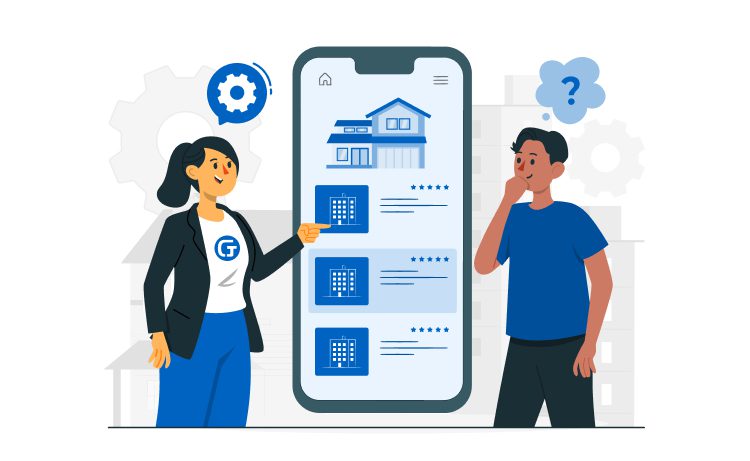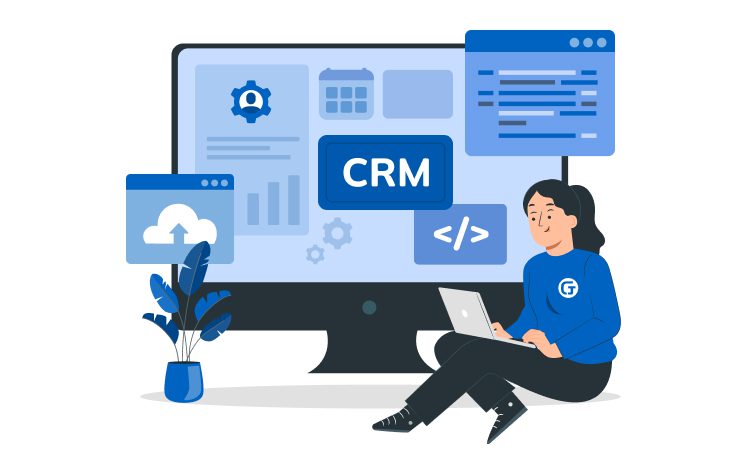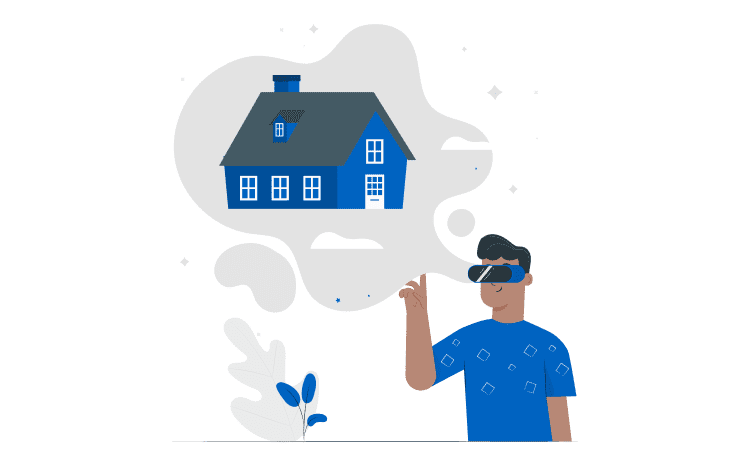
Innovative Ways You Can Use Virtual Reality in the Real Estate Industry



The pandemic has impacted VR significantly: according to experts, it accelerated the CAGR to 27.9%. It is expected that the market will grow to almost $21 billion by 2025 (for comparison: in 2020, the figure was $6.1 billion).
Recently, VR technologies have been used primarily in the gaming industry. Now virtual reality is applied in professional fields, including real estate, where it serves for attracting customers and increasing sales.
Content
VR is like an artificially created world that does not exist in real life. It can be accessed using immersive devices such as glasses, headphones, helmets, and gloves.
Plunging into virtual space, a person feels as if in reality and can intuitively interact with the world around them. It is brilliantly introduced in games and movies, which have long been the most popular VR-adapted formats.
In recent years, virtual reality is increasingly being introduced into professional spheres, and real estate is one of the priorities. According to Goldman and Sachs, 1.4 million agents deploy VR to showcase objects to customers. The ability to remotely display interiors to buyers has become more helpful in the pandemic era when quarantine measures restricted the movement of people.
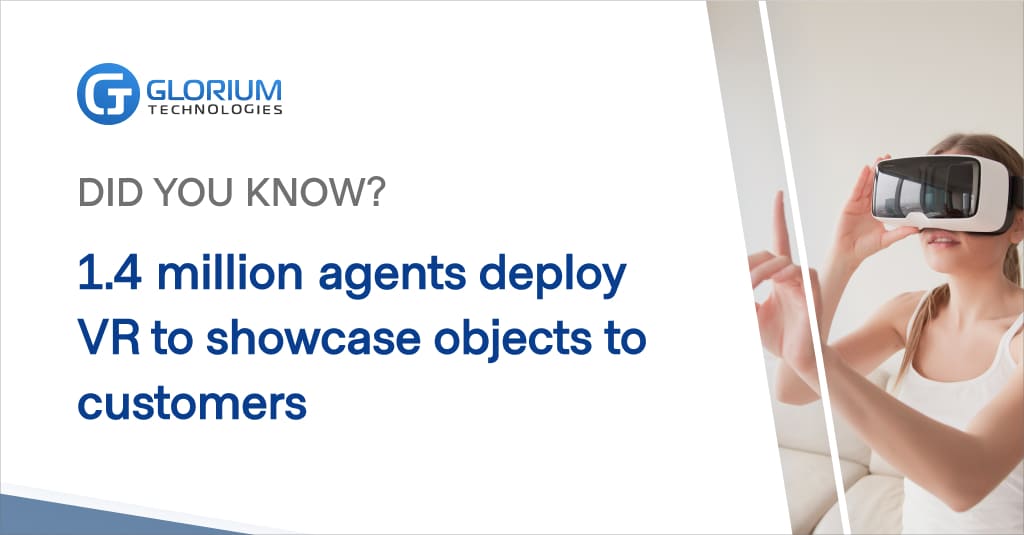
It is beneficial for all parties: the realtor gains the clients’ trust, the seller increases the chances of a successful conclusion of the deal, and the buyer saves time looking at the offers. NAR survey reports that companies will be actively working with VR over the next 2 years, along with 5G, Cyber Security, and Drones.
There are many ways to use virtuality for real sales. Let’s consider 6 of the most interesting and promising practices.
It has long been proven that 77% of shoppers choose virtual tours instead of physical visits. Now your client does not need to travel through the entire city or beyond to view the house. Just put on a VR headset to start a journey through the future home.
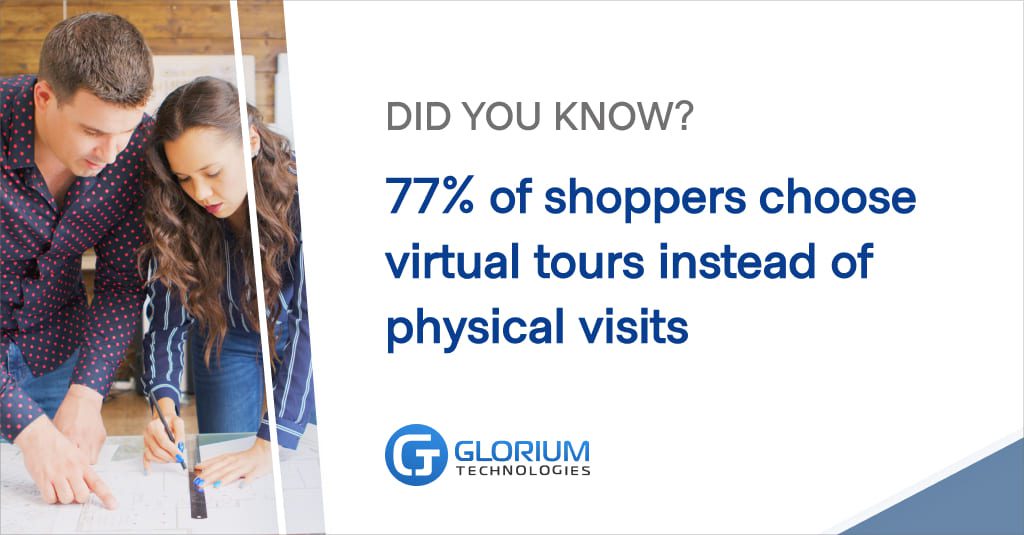
Formats:
In one evening, a client can visit several properties for sale or lease. The price calculator and detailed characteristics help to get a clear idea of the property and the area without consulting a specialist. So, a client saves time, and the real estate agency increases its competitiveness in the market.
Virtual reality can be about more than just site visits. Along with the design and interiors, the area is a critical factor when choosing a home. Thus, about 66% of apartment buyers admit that 3D and VR content helps to assess the view from the windows and the location of the building.
Technologies have gone even further, so now you not only can see the courtyard and neighboring houses from the window but ride a bike along the streets of the district.
Parks, supermarkets, schools, kindergartens, sports grounds, pharmacies and medical institutions, shopping malls, or bus stops — with VR, the whole area is at a glance. It is a chance for your client to evaluate the region regarding the convenience of transport interchange and external infrastructure without spending time visiting it.
An empty house without furniture and renovation looks uncomfortable and is unlikely to attract attention. About 70% of consumers choose VR precisely to see the furniture.
The NAR report has an interesting statistic: 47% of agents say that home decoration influenced the perception of their buyers. The priority rooms are the living room (46%), bedroom (43%), and kitchen (35%).
Placing furniture in all rooms to attract customers is not a bad idea, but quite expensive. Especially when it comes to a new building with bare walls. Virtual reality allows you to fully demonstrate any piece of real estate: with beautiful renovations, decorations, and all the necessary furniture. It doesn’t take design skills to create a warm, welcoming atmosphere.
Using virtual reality in real estate is useful for architects as well: using new software developments, they can make the right decisions on the design. Non-existent models are superimposed on real architectural objects or the environment to estimate how the completed building will look like.
It simplifies work on large-scale projects, reduces iterations, and helps to attract investors and buyers early – Real Estate Software Development Case Studies.
A VR model of an unfinished building can be compared to a model of a house or neighborhood. But for the latter, recreating the interior of a new building is not easy: it is necessary to use exhibition halls with apartment models, which requires serious investments.
Virtual reality demonstrates an object in detail from the inside and outside. Regardless of the construction stage, an investor or a buyer can see it in its finished form and understand whether it is worth investing in this project.
Virtual reality in the real estate industry can integrate with v-commerce. What does it mean? Let’s say a person takes a tour of an apartment and wants to improve the interior to their liking, for example, choose a different chandelier. For this, it is enough to go to the online store, select the items to change, and add to the tour.
In addition, if your client likes an object from the virtual space, furniture, curtains, a carpet, or a vase, there is a possibility to go to the virtual boutique and purchase it.
Just imagine how it saves time for your clients: when choosing a home, they can select furniture or decorative elements, look at them in the interior, and even buy. And all this without leaving home!
The combination of VR and commerce can be exactly what sets you apart from the thousands of similar companies on the market.
It is important to understand that virtual reality is connected not only with customers but with your employees. So, VR can be an effective tool for teaching staff (realtors, agents, and sales specialists) to communicate with clients. You can practice scripts or develop your communication and other soft skills using dialogue simulations. What is it?
Dialogue simulation is a training format when an employee does not choose one of the answer options but speaks to a virtual character. It helps to practice interpersonal skills, for example, active listening, understanding the interlocutor, empathy, and tolerance.
This approach helps to establish communication with clients, colleagues, and partners. Preliminary practice in virtuality minimizes the risk of mistakes in real communication.

The main challenge for virtual reality in the industry is not only to attract buyers but to convince them to make a purchase. A good salesperson knows that it is the hardest part. VR tours give clients complete freedom of action: you can visit objects at any time, be there as much as you want, and even interact with the environment.
It forms an emotional connection with the house, causing the desire to quickly become its owner. Carried away by tours, do not forget about other VR capabilities: design, visualization of unfinished buildings (architecture and interior), integration with v-commerce, and interactive simulations, as all this brings you closer to success.
It is a three-dimensional space created artificially. A person can “immerse” in it using immersive devices (headset, glasses, gloves, and headphones) and control virtual objects.
Standard options are conducting excursions to existing sites and the surrounding area; modeling of a building that has not yet been finished; styling the interior, allowing the client to change repairs, decor, furniture, including adding from an online store (and buying items they like); development of communication skills of staff.
Such innovative technologies attract customers, show them relevant offers in an attractive way, and provide complete information about objects and areas. For a realtor, it is an opportunity to serve clients at any distance, saving time and money.
